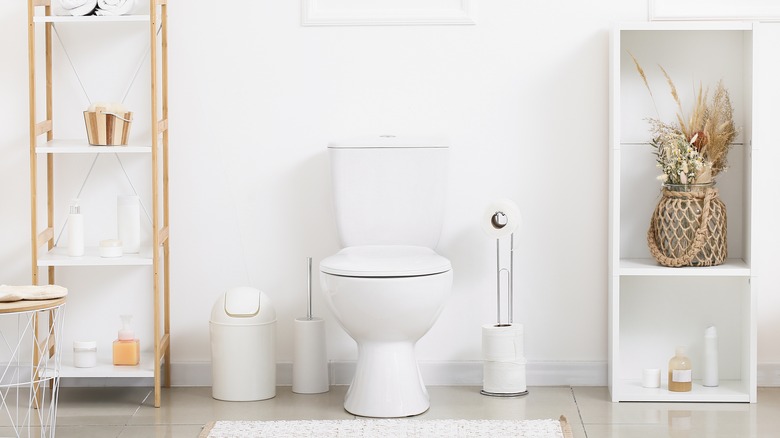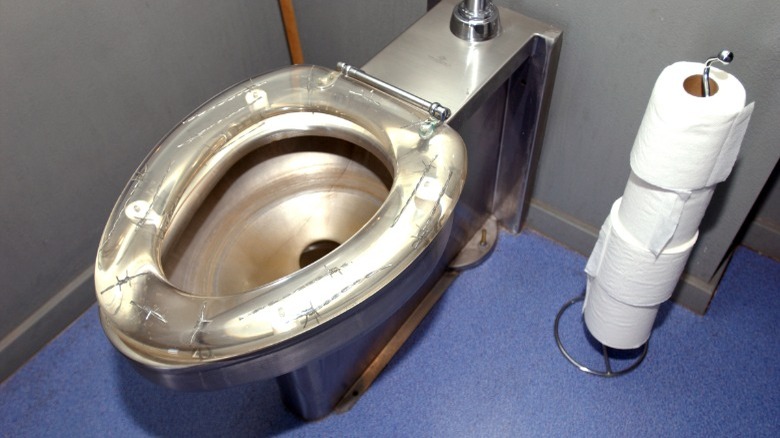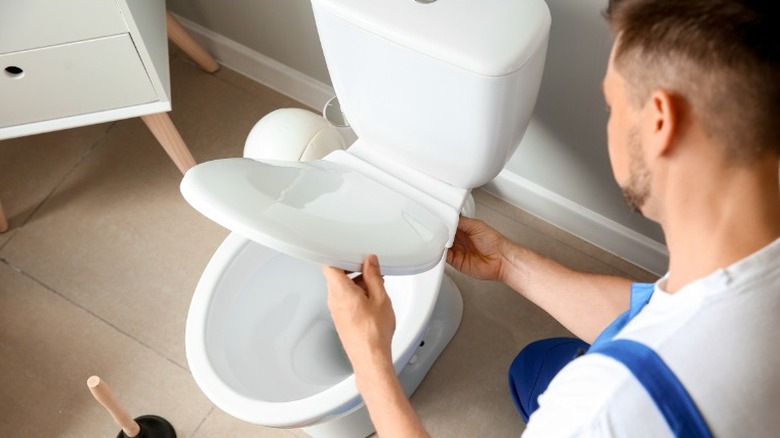What You Should Know Before Getting A Pressure-Assisted Toilet
If you're in the middle of remodeling a bathroom, it's worth considering a power flush toilet, also known as a pressure-assisted toilet. You might have encountered pressure-assisted toilets when visiting the bathroom at a commercial establishment of some kind. However, that may be the sum total of what you know about them. If so, you might be interested to know that pressure-assisted toilets actually present a viable option to homeowners as well.
A standard flush toilet uses gravity to assist in flushing what's in the bowl down the drain. With a pressure-assisted toilet, the power of gravity is boosted by a separate compressed air tank. This is hidden in the tank that normally fills with water in a standard toilet. It's activated by the flushing mechanism. Pressure-assisted toilets require less maintenance and experience less clogging of the system. Now that we understand a little about how they work, let's go over what you should know before getting a pressure-assisted toilet.
The advantages of a pressure-assisted toilet
One of the biggest advantages of pressure-assisted toilets is, of course, their energy efficiency. They use less water than a standard toilet, and you don't have to worry about the water pressure taking away from other areas when flushing them. Another terrific point is their functionality, resulting in less overall wear and tear on your plumbing system. The powerful flush and wider trap assist in maintaining a clear plumbing system. A pressure-assisted toilet rarely needs a plunger.
Additionally, pressure-assisted toilets take up less space and usually are lighter and smaller than a standard toilet, making them perfect for small bathrooms. The bowl is easier to keep clean, and there are fewer parts to repair. If you live in a more humid climate, pressure-assisted toilets are ideal due to the absence of tank condensation; the self-contained pressure system reduces bacterial growth in and around the toilet which can also cause floor damage.
The disadvantages of a pressure-assisted toilet
Like anything, there are a few disadvantages to consider, as well. First off, pressure-assisted toilets are quite loud compared to regular toilets. If you're the type that gets up several times in the night to use the restroom, you may end up flushing less often so you don't wake up the rest of the household. But even though they're louder, they're also faster to finish running. Next, they represent a higher initial cost. Pressure-assisted toilets are more expensive up front, but you save more money in energy costs over time.
Last but not necessarily least, although they have fewer moving parts to worry about failing, the parts they do have are difficult to find replacements for. The problems that occasionally happen are typically also more complicated to repair. This means it'll end up costing you more money if something breaks. All in all, pressure-assisted toilets are definitely an option worth considering when upgrading your bathroom.


